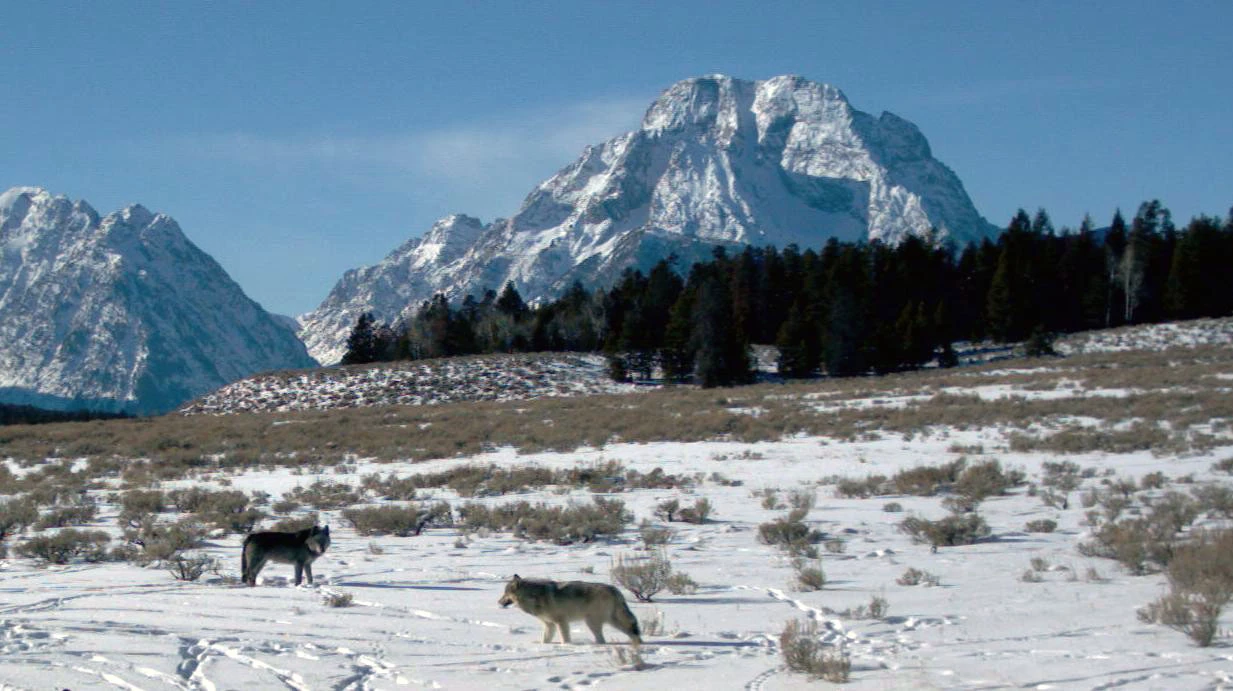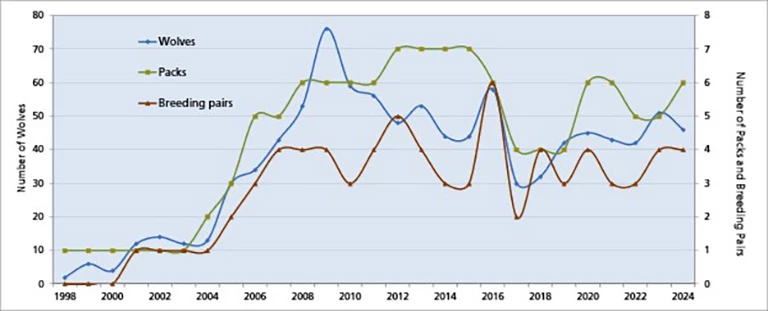
After the US Fish and Wildlife Service and National Park Service reintroduced gray wolves (Canis lupus) into Yellowstone National Park in 1995–96, wolves dispersed to Grand Teton National Park and surrounding areas. In 1999, a wolf pack denned in Grand Teton and produced a litter of pups—the first in the park in over 70 years. Since then, wolves continue to live and reproduce in the Jackson Hole area, including Grand Teton and the John D. Rockefeller, Jr. Memorial Parkway. The reintroduction of wolves restored a predator-prey relationship absent since humans eradicated wolves from the ecosystem in the early 20th century.

The Blacktail Butte pack formed in 2024. Observations from local wildlife tour guides suggest the pack formed from a Lower Gros Ventre female and a male from another pack. The pack’s den site was unknown, but captures in early 2025 revealed the pack had at least 2 pups. The Spread Creek pack also formed in 2024 with a territory that overlapped the park’s east boundary. One wolf died in the park in 2024—a subordinate male from the Lower Gros Ventre pack was hit by a vehicle on the Gros Ventre Road in May. Biologists captured 11 wolves in 2024 and fitted them with eight GPS and three VHF collars. Wyoming Game and Fish manages a trophy wolf hunt in the trophy game management area of northwest Wyoming outside national parks, the parkway, national wildlife refuges, and the Wind River Indian Reservation. Wolves traveling outside of the park and other protected areas are subject to the regulations governing that area. 
The return of wolves to Grand Teton and the surrounding area presents researchers with an opportunity to study the complex relationships of an ecosystem with an intact suite of carnivores and ungulates. Wolves and other predators affect prey populations and behaviors. In a five-year study, biologists found that in the winter when elk densities were relatively low, wolves preyed primarily on elk (71%) and moose (26%) and fed on deer and bison infrequently (3%). In the summer, when elk densities in the park were high, wolves preyed almost exclusively on elk and their calves, representing more than half of the kills in June and July. Wolves also prey on other species, including livestock which bring wolves into conflict with humans outside the parks. A long history of controversy surrounds wolf management and the effects of wolves on ungulates and livestock. Inside the park, there is no record of wolf depredation on livestock since their return to the area. Northern Rocky Mountain gray wolves including those in Wyoming were officially removed from the federal list of threatened and endangered species on April 25, 2017. Wyoming Game and Fish manages a trophy wolf hunt in the trophy game management area of northwest Wyoming outside national parks, the parkway, national wildlife refuges, and the Wind River Indian Reservation. Wolves traveling outside of the park and other protected areas are subject to the regulations governing that area. 
|
Last updated: June 13, 2025
